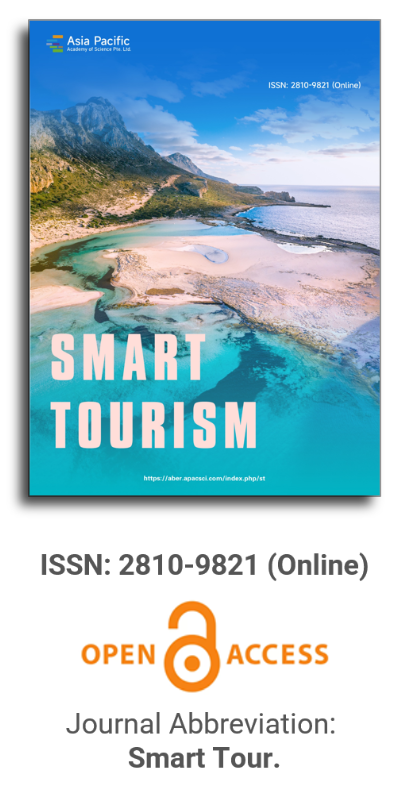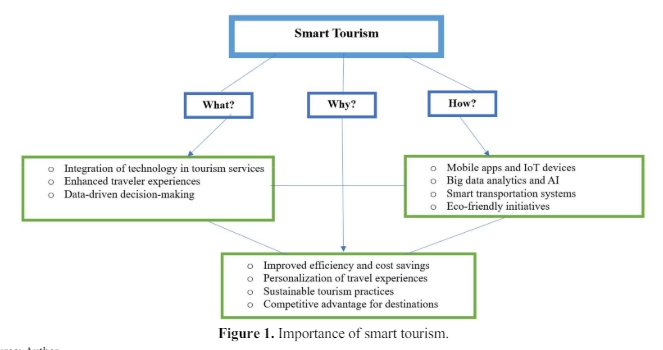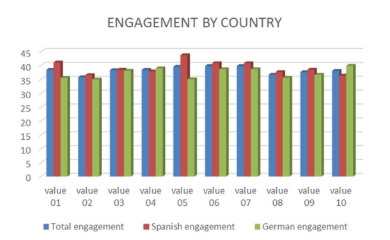


Predicting sustainability for slowtourism events
Vol 5, Issue 2, 2024
Download PDF
Abstract
The increasing demand for slow tourism in rural regions is leading many organizations to reorganize events by planning new strategies able to predict the impact of incoming visitors and new stakeholders. Typical economic benefit-cost analysis often cannot be used in such contexts in which it is hard to predict socio-economic impacts that are the most relevant. In this way, a methodology like the SROI Method, based on a wide set of indicators and a flexible analytical method, could give a prediction estimation useful to predict socio-economic impacts and tailored for a wide set of people. In this paper we consider three examples taken from small villages around Rome for which a set of events has been analyzed through a revised SROI Method in which we calculate the corresponding SROI value and compare it under a set of revised stages named as—SMARTOUR SROI focused on Slow Tourism Planning. The proposed evaluation methodology obtained by the application of the SROI Method to smart tourism stages is a first example of new sustainable analysis for slow tourism. The result shows that the methodology always gives a positive evaluation by highlighting the main issues related to the impact of slow tourism in such emerging scenarios. Moreover, in the discussion we can show that the case of the historical train example gives the best result due to the particular impact of such a typical scenario.
Keywords
References
- Su MM, Dong Y, Wall G, et al. A value-based analysis of the tourism use of agricultural heritage systems: Duotian Agrosystem, Jiangsu Province, China. Journal of Sustainable Tourism. 2020; 28(12): 2136–2155. doi: 10.1080/09669582.2020.1795184
- Fullagar S, Markwell K, Wilson E, et al. Slow Tourism. Multilingual Matters; 2012. doi: 10.21832/9781845412821
- Presenza A, Abbate T, Perano M. The Cittaslow Certification and its Effects on Sustainable Tourism Governance, Enlightening Tourism. A Pathmaking Journal. 2015; 5(1): 40–64. doi: 10.2139/ssrn.2827705
- Angelaccio M, Zappitelli L. Social “Smartourism”: A Sustainable Development Methodology for Smart Urban Lands. Athens Journal of Tourism. 2017; 4(2): 111–124. doi: 10.30958/ajt.4.2.2
- Angelaccio M, Hajiyeva U. Slow Tourism Project to Redistribute Tourist Demand in Lazio: Cost-Benefit Analysis Using Monte Carlo Simulation. Athens Journal of Tourism. 2023; 10(4): 243–258. doi: 10.30958/ajt.10-4-1
- Gemar G, Soler IP, Moniche L. Exploring the impacts of local development initiatives on tourism: A case study analysis. Heliyon. 2023; 9(9): e19924. doi: 10.1016/j.heliyon.2023.e19924
- Nicholls J, Lawlor E, Neitzert E, Goodspeed T. A Guide to Social Return on Investment. The SROI Network; 2012.
- Courtney P, Powell J. Evaluating Innovation in European Rural Development Programmes: Application of the Social Return on Investment (SROI) Method. Sustainability. 2020; 12(7): 2657. doi: 10.3390/su12072657
- Tulla AF, Vera A, Guirado C, et al. The Return on Investment in Social Farming: A Strategy for Sustainable Rural Development in Rural Catalonia. Sustainability. 2020; 12(11): 4632. doi: 10.3390/su12114632
- Basset F, Giarè F. The sustainability of social farming: a study through the Social Return on Investment methodology (SROI). Italian Review of Agricultural Economics. 2021; 76(2): 45–55. doi: 10.36253/rea-13096
- Boustead R, Bhatta S. Assessment of the Social Impacts of Community Based Tourism. Zeitschrift für Tourismuswissenschaft. 2021; 13(2): 268–302. doi: 10.1515/tw-2021-0010
- Ariza-Montes A, Sianes A, Fernández-Rodríguez V, et al. Social Return on Investment (SROI) to Assess the Impacts of Tourism: A Case Study. Sage Open. 2021; 11(1). doi: 10.1177/2158244020988733
- Antolini F, Terraglia I, Cesarini S. Integrating multiple data sources to measure sustainable tourism in Italian regions. Socio-Economic Planning Sciences. 2024; 95: 101959. doi: 10.1016/j.seps.2024.101959
- Notarstefano G, Gristina S. Eco-sustainable Routes and Religious Tourism: An Opportunity for Local Development. The Case Study of Sicilian Routes. Tourism in the Mediterranean Sea. Published online March 1, 2021: 217–239. doi: 10.1108/978-1-80043-900-920211016
- Ceron J, Dubois G. The Role of Social Return on Investment (SROI) in Measuring the Sustainability of Tourism Projects. Journal of Sustainable Tourism. 2020.
- Hunter RF, Dallat MAT, Tully MA, et al. Social return on investment analysis of an urban greenway. Cities & Health. 2020; 6(4): 693–710. doi: 10.1080/23748834.2020.1766783
- Davies LE, Taylor P, Ramchandani G, et al. Social return on investment (SROI) in sport: a model for measuring the value of participation in England. International Journal of Sport Policy and Politics. 2019; 11(4): 585–605. doi: 10.1080/19406940.2019.1596967
- Foundation FS. Discover Historic Train Travel. Available online: https://www.fondazionefs.it/it/treni-storici/2019/10/27/treno-storico-da-roma-termini-a-castelgandolfo-e-albano-laziale.html (accessed on 1 May 2024).
Supporting Agencies
Copyright (c) 2024 Michele Angelaccio, Lucia Zappitelli
License URL: https://creativecommons.org/licenses/by/4.0/

This site is licensed under a Creative Commons Attribution 4.0 International License (CC BY 4.0).

Prof. Hung-Che Wu
Nanfang College, Guangzhou
China
Indexing & Archiving
Asia Pacific Academy of Science Pte. Ltd. (APACSCI) specializes in international journal publishing. APACSCI adopts the open access publishing model and provides an important communication bridge for academic groups whose interest fields include engineering, technology, medicine, computer, mathematics, agriculture and forestry, and environment.



.jpg)
.jpg)

.jpg)

